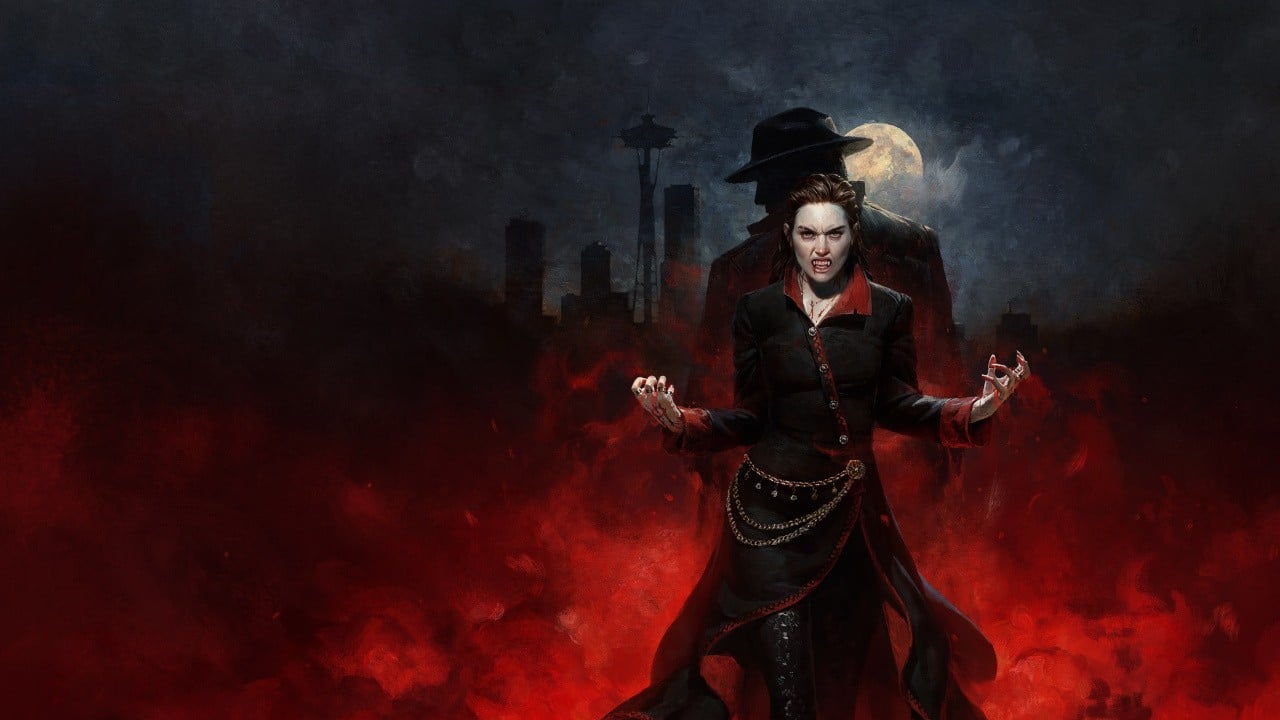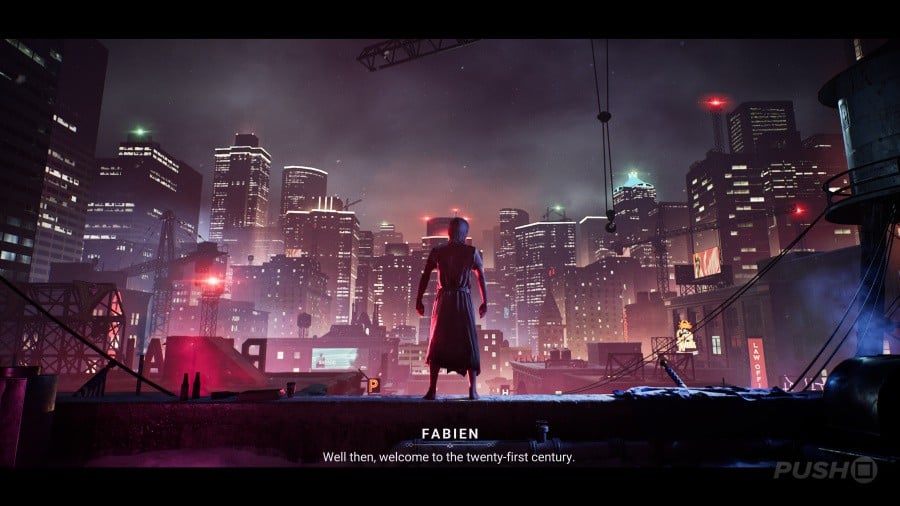
For the first few hours, Vampire: The Masquerade – Bloodlines 2 seems surprisingly promising. Despite a difficult development process, the game just might be better than many expect.
While the game initially shows promise, Bloodlines 2 unfortunately falls apart as you play it. Despite having some good story elements and interesting concepts, this sequel to the beloved 2004 original doesn’t live up to expectations.
Bloodlines 2 clearly gets what players loved about the original game. While the first release wasn’t perfect, it remains a charming look back at early 2000s culture – a bit over-the-top, but with a really strong atmosphere.

Despite being set in the future, in 2024, the sequel occasionally captures the same fun, over-the-top feel as the original. The game offers some genuinely interesting moments, thanks to its rich backstory and unexpected plot twists.
If you enjoy the complex social dynamics and hidden rules of the Vampire: The Masquerade universe, you’ll likely find a lot to appreciate in Bloodlines 2, especially with its generally engaging characters. The game clearly demonstrates a strong understanding of the source material’s history and background.
Unlike the original game, Bloodlines 2 has significantly fewer role-playing elements—so much so that it’s questionable whether it can even be called an RPG. The developers, The Chinese Room, have acknowledged this, describing it as a ‘streamlined’ experience, but that’s a considerable understatement.
The game gives you a lot of choices and even says your decisions will change things, but in reality, only a few important decisions actually affect the story throughout the entire 15-hour experience.
Even when your choices seem to matter, the results are usually unclear. Characters might *say* your actions had an effect, but you almost never actually see those consequences play out. More often than not, the dialogue options just change what the other person says, and it’s never mentioned again when you talk to them next.

The game’s role-playing feels limited, falling into the same trap as Fallout 4. You’re often given four dialogue choices, but they mostly express the same idea with minor variations in tone. It creates the *feeling* of having choices without actually offering any real difference in outcome.
The biggest problem with the game is that it tries too hard to *feel* meaningful. For instance, it shows you relationship updates – similar to those in Telltale games – when you make choices, but those choices ultimately don’t have much impact.
Unfortunately, you don’t have much freedom when creating your character, specifically when picking their clan and background. You’ll be playing as Phyre, a pre-defined, older vampire, and while that isn’t a bad thing, it does mean your choices are quite restricted.

One of the biggest letdowns in Bloodlines 2 is how the clan system works. The game focuses on fast-paced combat, and your chosen clan is supposed to heavily influence your fighting style. However, you’ll master all of your clan’s special abilities surprisingly quickly – usually within the first two to three hours of gameplay, around the start of the second chapter.
The character progression system, which is better described as a series of branching paths rather than traditional skill trees, feels unfinished and offers very little sense of improvement throughout most of the game.
The story also lets you quickly share some of Phyre’s history early on. It’s a fairly engaging scene, letting this ancient character reflect on their past – whatever you decide it is – but it’s rarely mentioned again after that, with only a few brief references later on.
Bloodlines 2 has moments of real potential, as we’ve discussed, but one major issue consistently ruins the experience: the flashbacks featuring the character Fabien.

Fabien is a detective from the 1920s, but his mind is somehow stuck inside Phyre’s head. Even though you only hear his voice, he’s a charming and interesting character. He’s also essential to solving the main mystery – something caused Phyre to wake up, and Fabien’s detective skills are the key to figuring it out.
Fabien has wandered the streets of Seattle for over a century and was even imprisoned inside another vampire’s mind. Because of his long life, he provides valuable background information and helps build the world of the story. However, much of this information is delivered through long and incredibly dull flashbacks.
After each chapter, Phyre goes home to relax while Fabien is lost in memories. The game then switches you to playing as Fabien, investigating the same Seattle as Phyre. However, this Seattle feels empty and is frustrating to explore because Fabien can’t move around as easily as Phyre.

As Fabien, the gameplay consists of repeatedly walking between points on the map. Reaching each point triggers a conversation with a character, but the dialogue choices feel just as unimpactful as those in the main game.
The game wants you to act like a detective, but finding clues mostly involves selecting all possible conversation options and using one of Fabien’s vampire abilities to get information from people or objects.
During these flashback scenes, players have absolutely no control over what happens. It doesn’t even *feel* like you’re making choices – it just feels like a waste of time. The character Fabien is meant to be a helpful friend, but these long, drawn-out scenes will likely make you dislike him instead.
The constant flashbacks repeatedly disrupt the game’s flow and significantly reduce any incentive to play through it again. It’s a surprisingly poor choice in how the story is told.

The gameplay focuses on action, which could have been a strong point for the game. However, several frustrating design choices unfortunately hold it back.
The combat blends quick and powerful attacks, and you can quickly dodge to avoid danger. The melee system is surprisingly detailed – dodging in different directions opens up special follow-up attacks, each useful in its own way.
The Chinese Room clearly put a lot of effort into the core gameplay, and it feels really good. Even though clan abilities are somewhat limited, they can add a lot of excitement to fights. Some, like the Brujah clan’s powerful combo attack, are especially satisfying to use.

Certain enemy types can be incredibly frustrating, often ruining otherwise good encounters. Guns are the main problem – enemies with shotguns and SMGs can suddenly lock you down and cause intense screen shake, making it hard to see and react.
While ranged attacks aren’t a huge problem if you prefer playing a sneaky Phyre, players often abandon stealth and end up in direct combat. If your clan specializes in taking out enemies from hiding, you might struggle against bosses who only use close-range attacks and their numerous minions.
Poor combat is frustrating enough, but *Bloodlines 2* takes it further with severe performance issues on both the standard PS5 and the PS5 Pro. These drops in frame rate aren’t just annoying – they actually make the game harder to play by registering your inputs inconsistently.
The game doesn’t just have occasional slowdowns – it frequently drops to very low frame rates. Stuttering happens constantly, even in simple situations; simply turning around in a small area can cause noticeable pauses.

The game’s technical performance is shockingly bad. We haven’t seen a full-priced release this poorly optimized since the early PlayStation 3 open-world games from Bethesda, and even those were more complex projects than Bloodlines 2.
Read More
- Hazbin Hotel season 3 release date speculation and latest news
- Where Winds Meet: Best Weapon Combinations
- Zootopia 2 Reactions Raise Eyebrows as Early Viewers Note “Timely Social Commentary”
- Red Dead Redemption Remaster Error Prevents Xbox Players from Free Upgrade
- Victoria Beckham Addresses David Beckham Affair Speculation
- Where Winds Meet: How To Defeat Shadow Puppeteer (Boss Guide)
- The Death of Bunny Munro soundtrack: Every song in Nick Cave drama
- Is There a Smiling Friends Season 3 Episode 9 Release Date or Part 2?
- Every Wicked: For Good Song, Ranked By Anticipation
- Where to Find Tempest Blueprint in ARC Raiders
2025-10-17 16:39